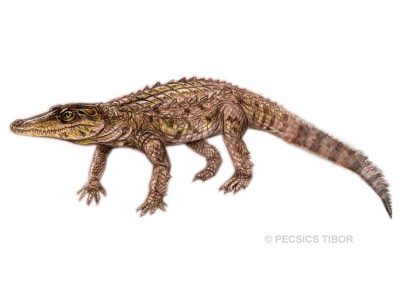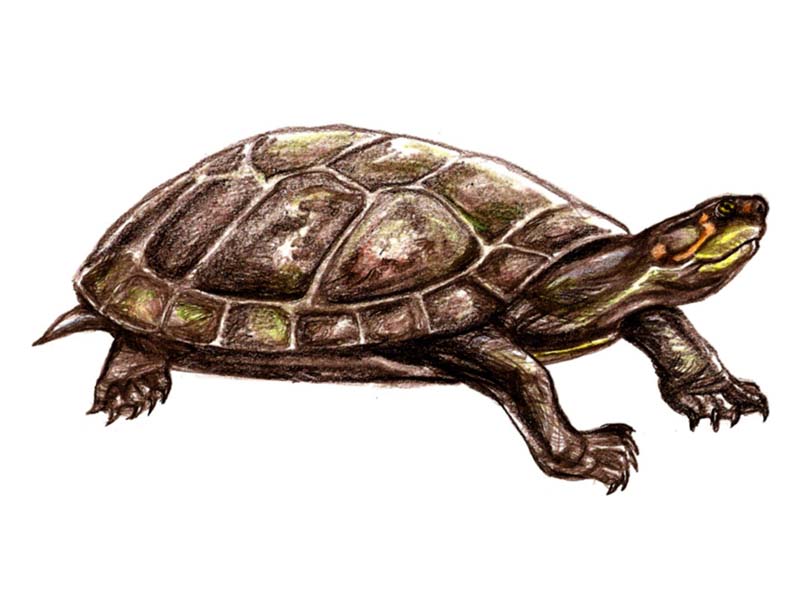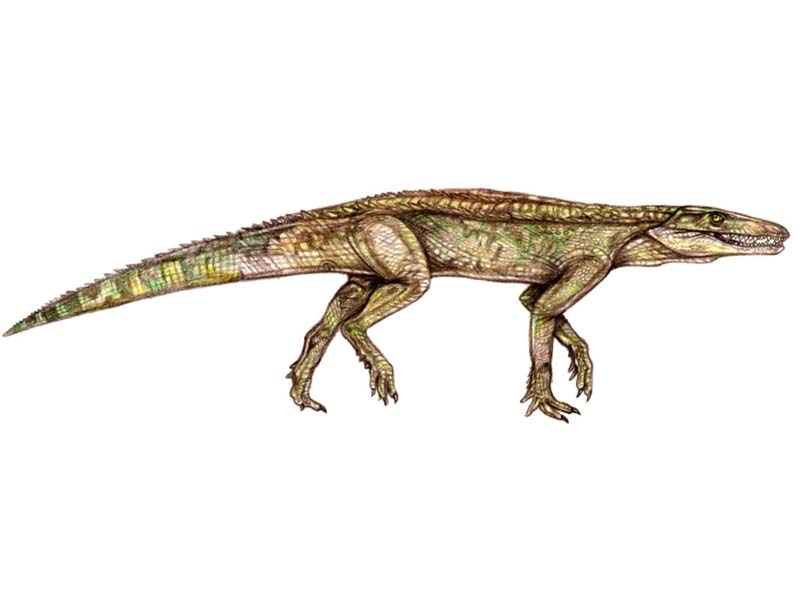
Fragmentary lizard fossils
Besides Bicuspidon, Distortodon, Pelsochamops, and Chromatogenys, other lizards were also identified in the Iharkút fossil material…

Similarly to Doratodon, this small crocodilian is very rare at Iharkút and its presence has been only identified in the last few years, increasing the number of crocodilian taxa known from the site to four. Only two partial upper jaws and isolated teeth can be unambiguously assigned to this Theriosuchus. It is characterized by a relatively high skull and small, slightly bulbous rear teeth therefore contrasting the morphology of the Late Cretaceous Theriosuchus like species, Sabresuchus sympiestodon from Romania. Theriosuchus was one of the first fossil crocodilian to be named in the 19th century and it is best known from the Late Jurassic and Early Cretaceous of Europe therefore its presence in the Late Cretaceous surprised specialists. Together with other “survival” forms such as certain dinosaurs, crocodilians and turtles from Iharkút and other Late Cretaceous sites in Europe, Theriosucuhus is recognized as an additional relict of much older Early Cretaceous ancestral faunas. Again, the island geography of Europe during the Late Cretaceous might have favored the survival of such relict forms. The Theriosuchus remains from Iharkút confirm the presence of this lineage during this time and even fill part of the gap in its disjunctive stratigraphic record. Recent studies have argued for a wide distribution of Theriosuchus-like forms in the Late Cretaceous of Europe.

Besides Bicuspidon, Distortodon, Pelsochamops, and Chromatogenys, other lizards were also identified in the Iharkút fossil material…

Based on the findings collected from the Late Cretaceous of Europe, it was assumed that an approximately 22 million years long period…

Named after the everlasting Trabant 601 cars what used on the field by our research group so many years…

The only fossils unearthed of these small crocodilians are a few skull and lower jaw elements and isolated teeth…